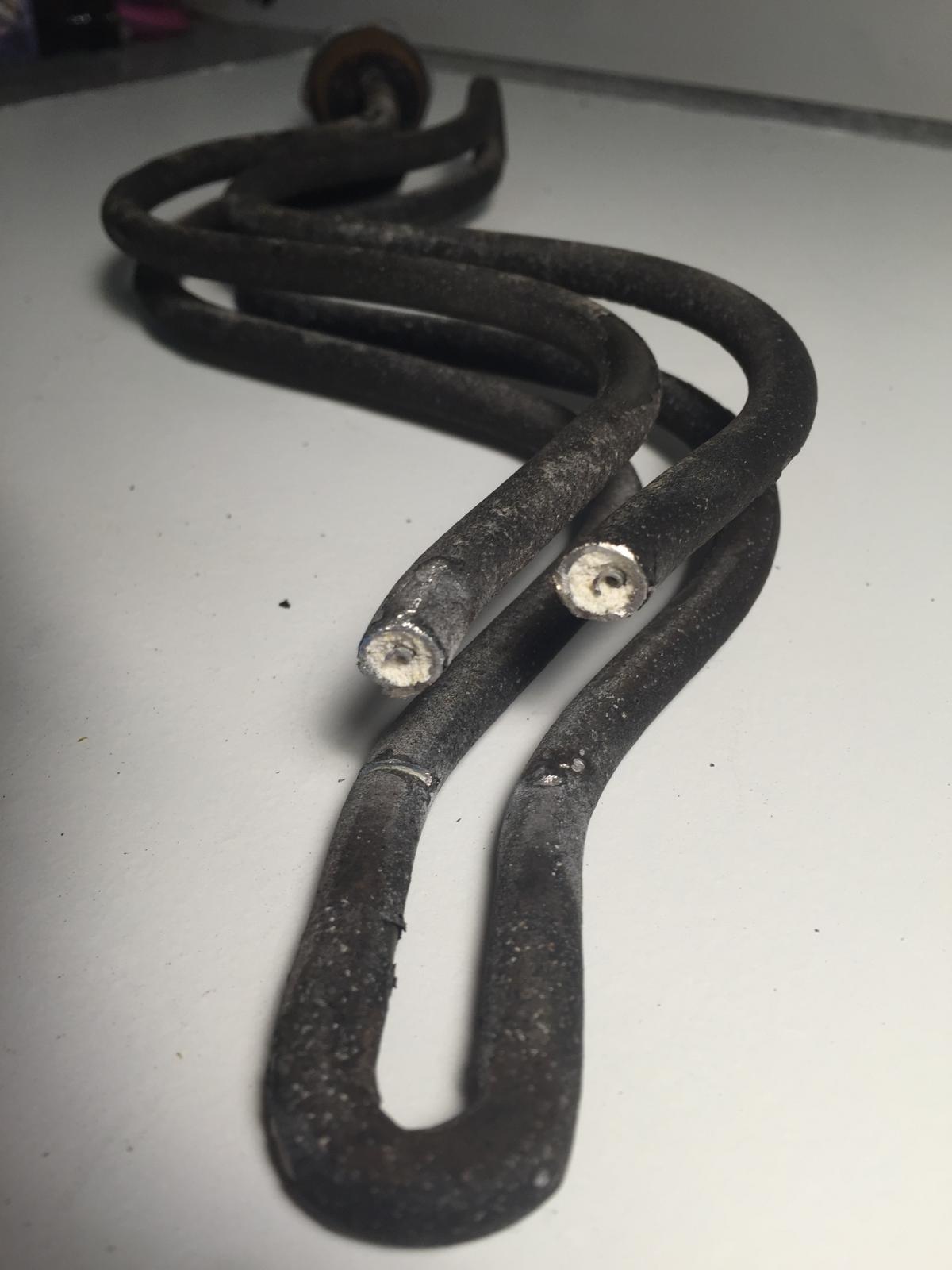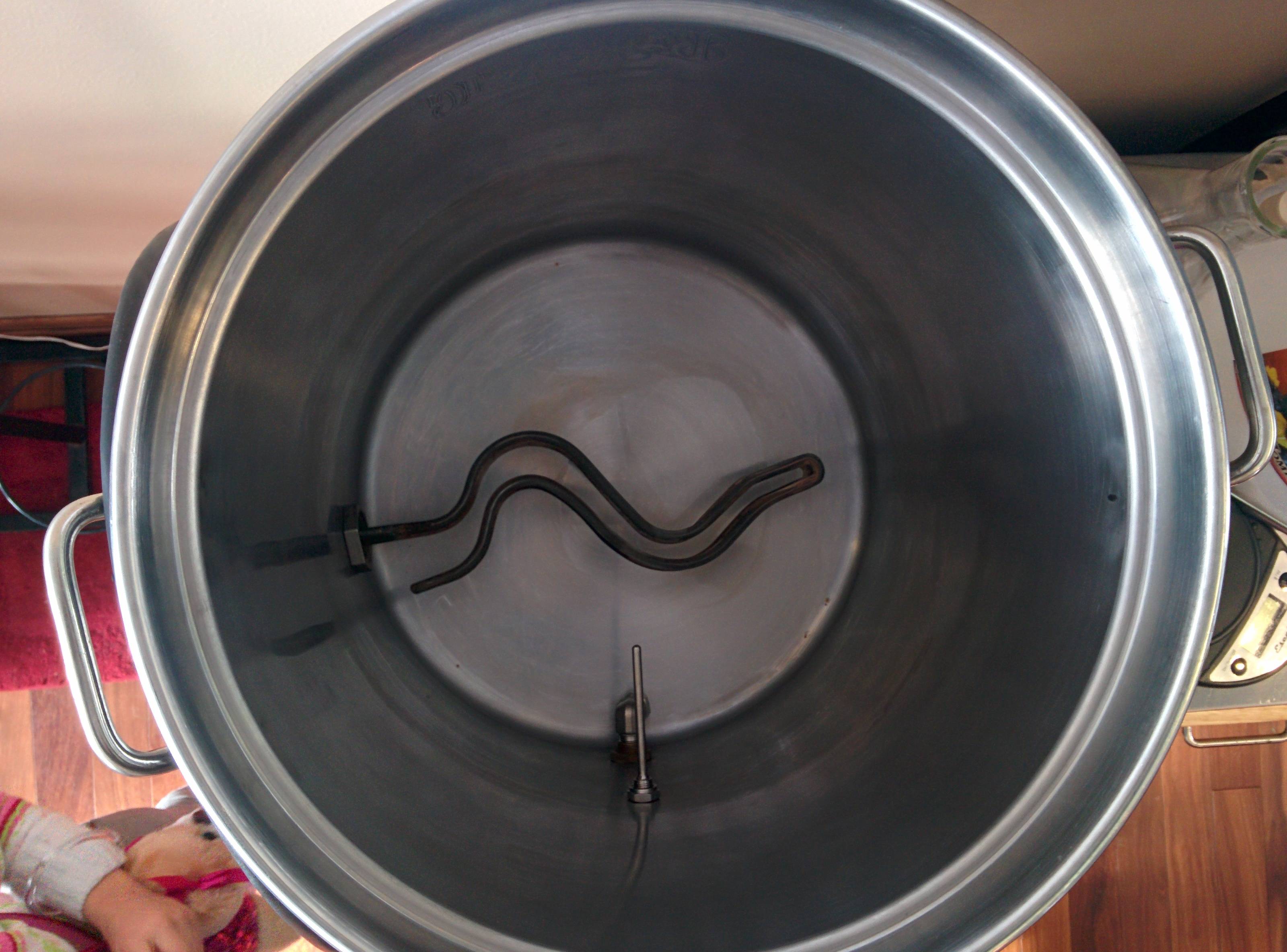dyqik
Well-Known Member
Now I see why you're so confused.No.. not exactly lol we are saying two totally different things..
What determines the power of the element?
The properties of the material used to make the element, and the amount of it used.
The resistivity of an element converts the electricity that flows through it into heat.
There is NO POSSIBLE WAY that the 4500W and 5500W elements can have different watt densities if they are made of the same material and are the exact same size??
The outer material of the element doesn't set the resistance of the element. That's set by the resistance of a heating wire inside the element. An element is a single piece construction, an outer material is put over a resistance wire inside the element, and the space filled with a insulating heat transfer material. Otherwise the mains power would be connected to the outer shell. Heating elements are available in same shells with different resistances per inch of heating element, and hence different watt densities.
You can't tell the power or resistance of an element by looking at the material on the outside. The 4500W ripple element has a more resistive internal wire than the 5500W ripple element, but the outer shells are identical in both material and size. The 4500W element passes less current at 220V than the 5500W element inside exactly the same shell. Hence the 4500W element has a lower watt density.






